Chichen Itza is a historical city found in Yucatán State, Mexico. It’s one of the most prolific sites left behind by the Mayan civilization which flourished in the region for hundreds of years.
Chichen Itza itself is more than just a pyramid. It’s a complete city with multiple ruins and various Mesoamerican buildings and was one of the largest Mayan cities to ever exist.
Apart from the fact that it was built by the Mayans, do you know any other facts about Chichen Itza?
Let’s check out some interesting things about this ancient city
1. What does Chichen Itza Mean?
“Chichen Itza” is a Mayan name that literally means “At the mouth of the well of the Itza”.
That doesn’t explain much, but it could mean that “Itza” refers to 2 terms:
- “Its” which means “sorcerer.”
- “Ha” which means “water.”
So this effectively translates as “At the mouth of the water sorcerer.”
Another theory refers to the “Itzá,” which was a tribe that gained power in the area of Yucatán State.
The most probable explanation is that it’s indeed referring to the people in power back then, the Itza and that the well refers to rivers flowing beneath the city at the time, taking care of its water supply.

2. Where is Chichen Itza located exactly?
Yucatán State in modern-day Mexico is located in the South-East of Mexico. It’s the most northern place on the Yucatán peninsula.
One of the most popular places in this area is the resort town of Cancun and Chichen Itza is located about 120 kilometers from it.
3. What is El Castillo in Chichen Itza?
If you think about Chichen Itza, the main pyramid instantly pops up in your mind. After all, it’s the most significant building in the entire city.
El Castillo also referred to as the “Temple of Kukulcan,” is about 30 meters high (98 ft) and the 4 sides are about 55.3 meters long (181 ft).
An interesting fact about the temple of Kukulcan is that it’s built on top of another, much older temple.
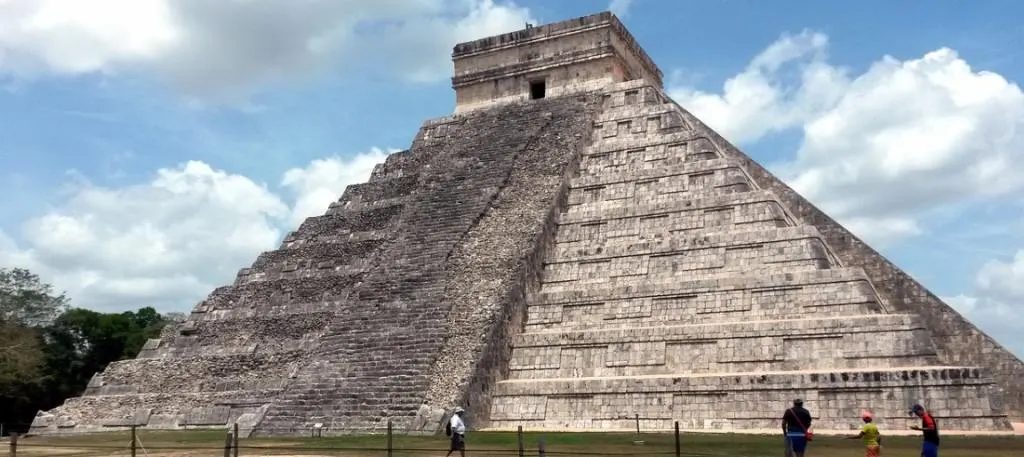
4. It was built around cenotes
The area around Chichen Itza is full of cenotes. These are sinkholes that are a natural source of fresh water.
This means that these cenotes actually provided water for the city, as the sinkholes could provide enough water to supply a relatively large city.
Strangely enough, there is not a single river on the peninsula of Yucatán and all of the natural water supplies are found underground in these sinkholes.

5. Maya People at Chichen Itza loved sports
Sports are a massive part of our culture. Millions of people play sports all around the world.
The Mayans at Chichen Itza also liked sports and played the Mesoamerican ballgame, which is a combination of football and basketball.
To make this attractive, they actually built a great ball court in the city, very similar to the stadiums that sports are played in today.

6. Multiple temples and Pyramids
El Castillo isn’t the only temple in Chichen Itza. There are multiple similar temples to be found.
One of them is the Osario temple complex which contains a pyramid that looks very similar to the large temple of Kukulcan.
It isn’t as well preserved but the resemblance is remarkable and the base of the staircase also contains the serpents with open mouths.

7. The serpent on the staircase
During the Spring equinox, the serpent can be seen moving up and down the staircase of the Kukulcan temple.
Well not really, just the effect of a serpent.
It’s still pretty impressive that they were able to predict how this would happen. The Mayan people were known to be excellent astronomers though.
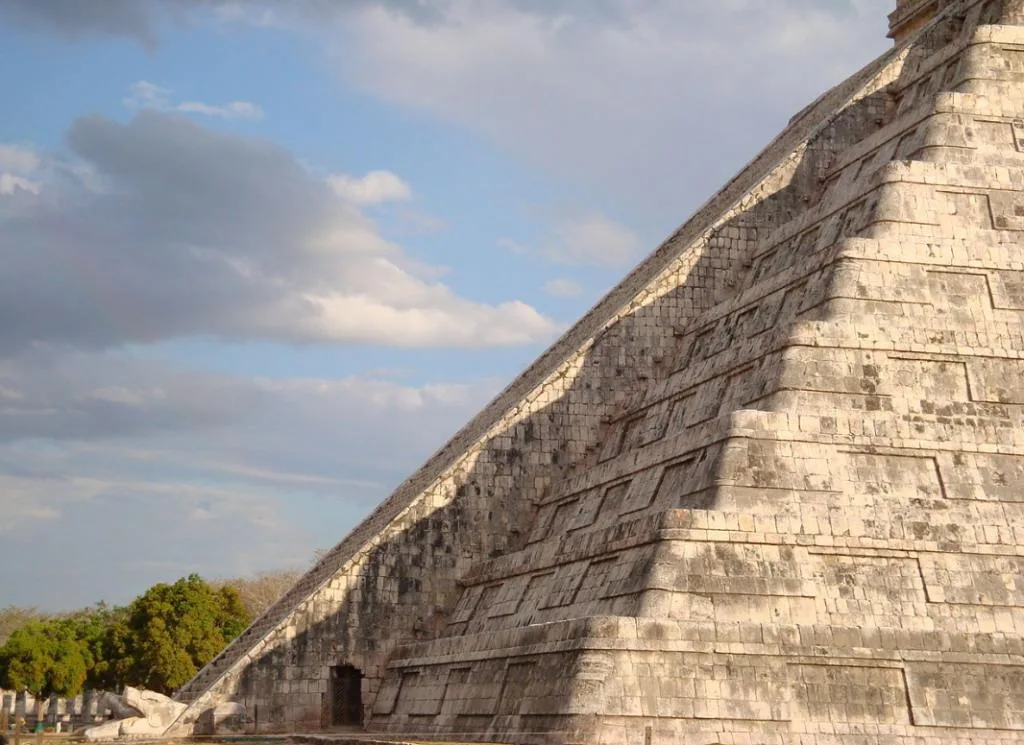
8. Chichen Itza is not entirely Mayan
Chichen Itza was not only one of the largest Mayan cities of the pre-Columbian era, but it was also the most culturally diverse.
This means that a lot of buildings were constructed with influences from other social backgrounds.
It’s believed that the Mayans were trading with other groups such as the Toltec and that this is the reason they were able to bring their own style into the city.
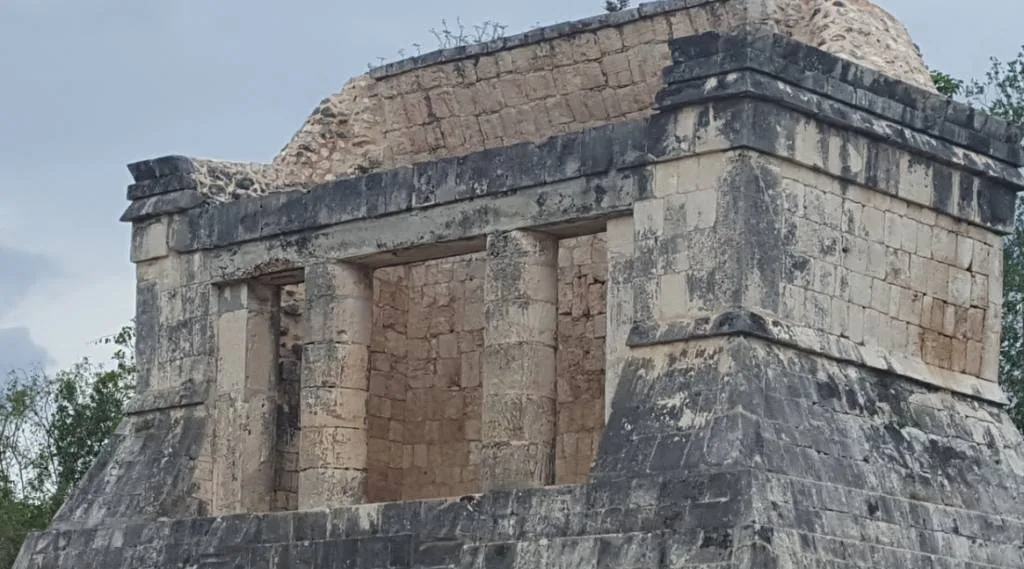
More interesting facts about Chichen Itza
9. The Pyramid of Kukulcan contains exactly 365 steps. 91 on each side and one on the top. This represents exactly the days of the year.
10. El Castillo was built in such a way that it served as a massive calendar. We told you the Mayans were great astronomers right?
11. The feathered serpent at the bottom of the pyramids at Chichen Itza is the deity of the mesoamerican cultures called Kukulcan.
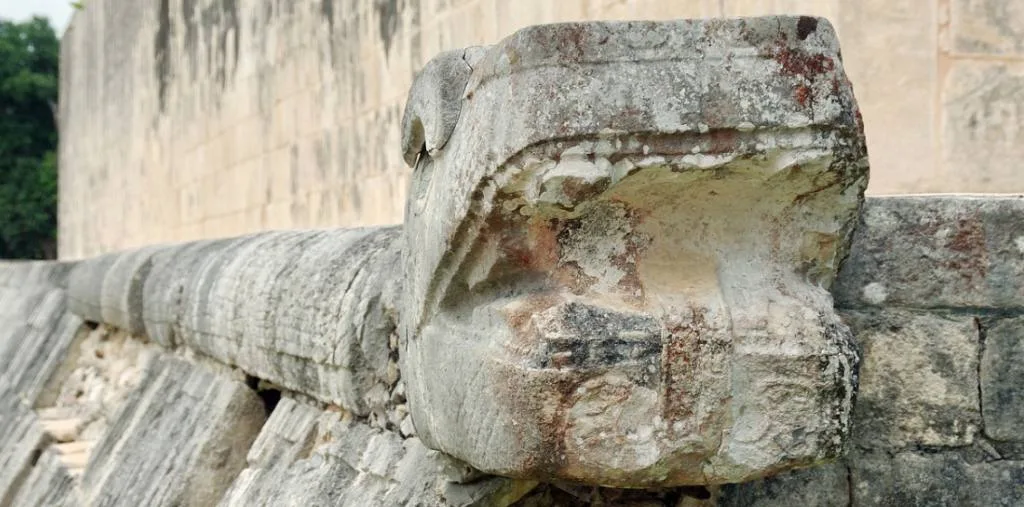
12. American Explorer John Lloyd Stephens stumbled upon Chichen Itza back in 1841. We can only imagine the shock he felt to discover such a hidden treasure of a city.
13. One of the most interesting facts about Chichen Itza is its decline. Many theories have been proposed as to what happened, but the most logical one is that food was scarce due to bad weather conditions and overpopulation and everybody simply moved out.
14. Chichen Itza was not only the capital of the Mayas, it was also the most important trading hub. During its golden period, the port at Isla Cerritos was used to transport goods and valuables all across the Americas.
15. The Mayans were great astronomers, and had their own observatory called “El Caracol.” This was used to observe the stars and planets and expand their city according to their findings.
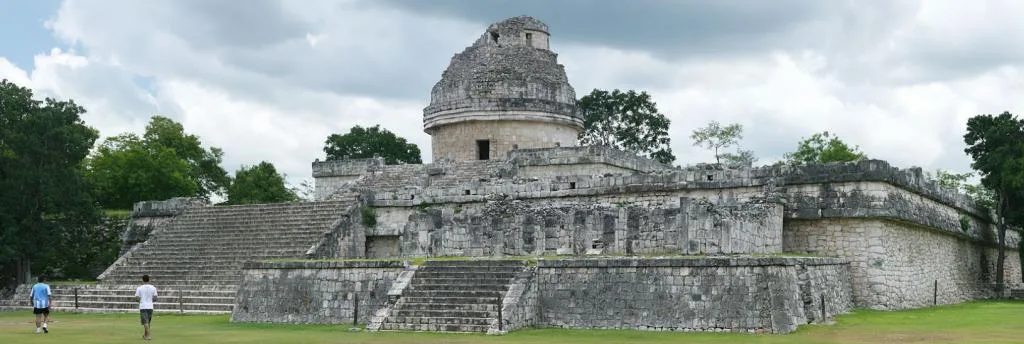
16. Scientists have proven that the pyramid was designed to create a sound that resembles the chirping of a bird. This happens when you, for instance, clap your hands at the bottom of the stairs. Well, at least to make some sort of sound as they didn’t really have an idea what it would sound like when completed, the Belgian scientists found out.
17. The ball court at Chichen Itza is the largest in all of the Americas. It also contains several temples.
18. We do assume that most of the games were played for fun. We don’t know what the exact rules of the ball games were though. However, we do know that sometimes the losers had to undergo a pretty unpleasant fate. That revolves around their head ending up on the Tzompantli.

We don’t believe this requires any further explanation…
19. …Or maybe it does?
Well, let’s just say that the ballcourt contained a clear depiction of what was about to happen to the losers:
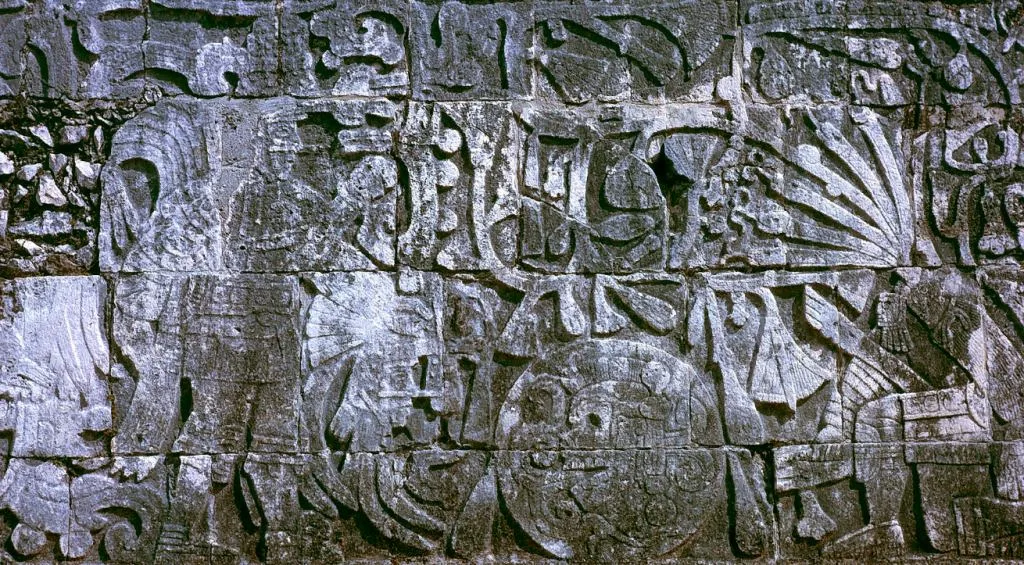
It’s a bit unclear, but here’s what the drawing shows. On the left, you see a guy holding a severed head. On the right, you see a guy without a head and blood spouting out of his neck. The blood spouts are in the form of serpents. After all, they needed to keep Kukulcan happy somehow.
We’re not convinced we would like this game, but it surely adds to the excitement (somehow)…
20. Mayans painted human sacrifices blue before throwing them into the sacred well to die. The reason is that they believed painting them blue would bring rain, and as a result, a good harvest would follow. Scientists have now discovered how the distinct type of blue was created.
21. The human sacrifices chosen by the Mayans were boys and young men. For a long time, it was believed that they were virgin girls, but this has been disproven.
22. Up until 2006, tourists were allowed to climb the stairs of El Castillo. Unfortunately, in 2006 a woman died when she fell off the stairs when descending. Since then, climbing the stairs has been banned by authorities.
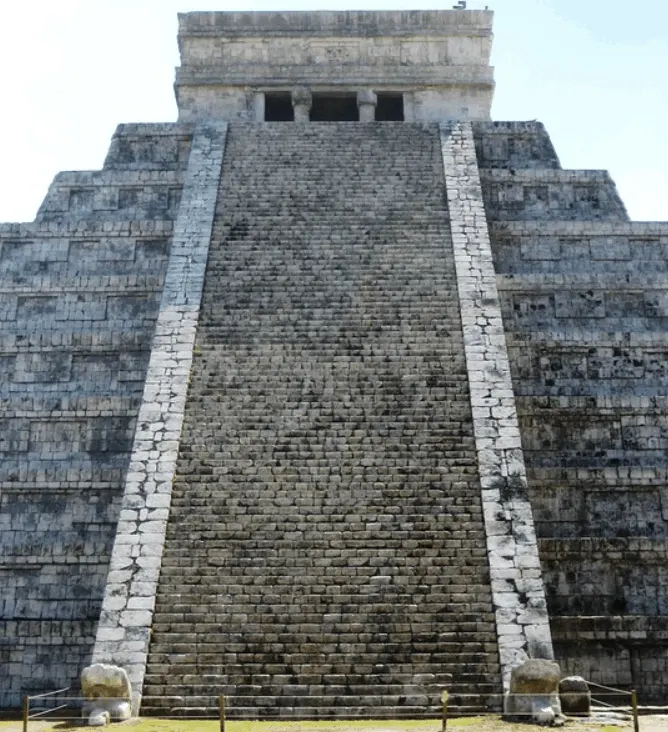
23. Chichen Itza is one of the most visited places in all of Mexico. It’s estimated that nearly 3 million people visit the site every year.
24. Chichen Itza is owned by the Mexican Government and the site is maintained by Mexico’s Instituto Nacional de Antropología e Historia (National Institute of Anthropology and History).
25. Restoration is being done at the site of Chichen Itza. That is partially why the main pyramid and other buildings are apparently in good condition.
26. Chichen Itza is one of the 7 wonders of the world today. It shares this title with the Great Wall of China, the Christ the Redeemer Statue, Machu Picchu, The Taj Mahal, The Colosseum, and Petra.
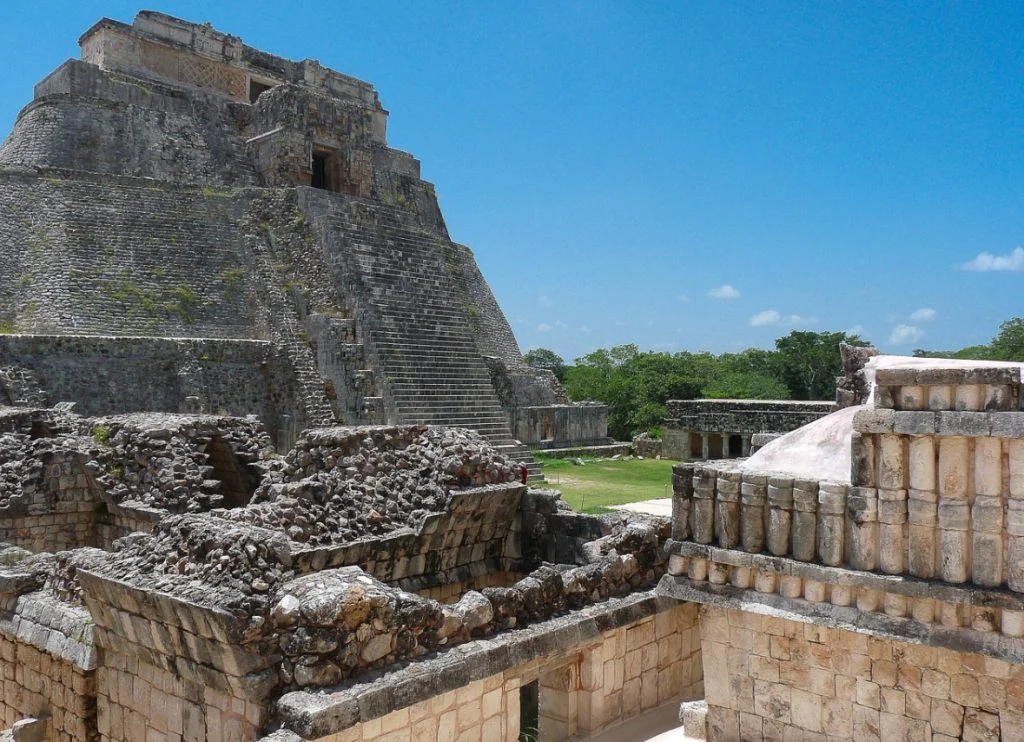

Leave a comment
You must be logged in to post a comment.